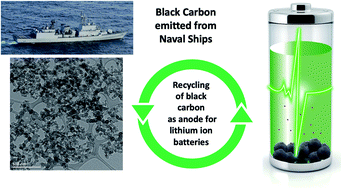Application of soot discharged from the combustion of marine gas oil as an anode material for lithium ion batteries†
Abstract
Many studies have recently investigated the characteristics of combustion products emitted from ships and onshore plant facilities for use as energy sources. Most combustion products that have been reported until now are from heavy oils, however, no studies on those from light oils have been published. This study attempted to use the combustion products from the light oils from naval ships as anode materials for lithium ion batteries (LIBs). These products have a carbon black morphology and were transformed into highly crystalline carbon structures through a simple heat treatment. These new structured materials showed reversible capacities of 544, 538, 510, 485, 451 and 395 mA h g−1 at C-rates of 0.1, 0.2, 0.5, 1.0, 2.0 and 5.0C, respectively, and excellent rate performance. These findings were the result of a combination hierarchical pores ranging from the meso- to macroscale and the high capacitive charge storage behavior of the soot. The results of this study prove that annealed soot with a unique multilayer graphite structure shows promising electrochemical performance suitable for the production of low-cost, high-performance LIB anode materials.



 Please wait while we load your content...
Please wait while we load your content...